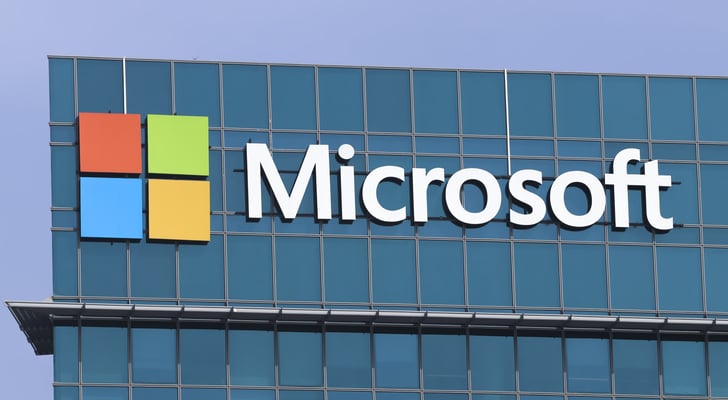Among its technology-centric competitors, Microsoft (NASDAQ:MSFT) suffered one of the least-worrisome bouts of volatility. While the contentious U.S.-China trade war impacted virtually everything, Microsoft stock lost 11% in the final quarter of 2018. Yes, it’s significant but nothing like what Apple (NASDAQ:AAPL) endured.
A key reason for MSFT stock holding its ground is product diversity. Unlike Apple, which is highly leveraged to its flagship iPhone, Microsoft has multiple robust revenue channels. The company has successfully moved into the cloud-computing space, while its legacy businesses like hardware have gained momentum.
However, a recent blip on the radar aroused some anxious looks on Wall Street. For the Tuesday session, the MSFT stock price closed down 2%. With the nervous trading, Microsoft’s 50-day moving average (DMA) is on the verge of crossing underneath its 200-DMA.
This phenomenon is what traders refer to as the dreaded “death cross.”
Theoretically, it suggests that sentiment has weakened in Microsoft stock: more traders are piling on the bearish trade, causing bystanders to follow suit.
But should investors heed the death cross’ warning, or are folks reading too deeply into this issue?
The Death Cross Reflects Reality for Microsoft Stock
Any conversation that involves the death cross invariably invokes the debate between technical analysis versus fundamental analysis. Often, skeptics blast these technical patterns as nothing more than tea-leaf reading exercises.
However, this is not an entirely fair assessment. For one thing, recurring patterns do show up throughout various stocks, funds and market indices. Perhaps the most common indicator, the bearish head-and-shoulders pattern, reliably warns investors not to pile in on a peaking asset.
According to SamuraiTradingAcademy.com, the head-and-shoulders pattern has an 83% accuracy rate. I’d take this specific metric with a grain of salt. Admittedly, technical patterns are difficult to quantify. Nevertheless, this phenomenon features prominently in multiple analyses, including from mainstream sources such as CNBC.
In addition, popular trading resource StockCharts.com writes extensively about the head-and-shoulders. Founded in 1999, StockCharts.com has covered countless companies, both large and small. If technical analysis wasn’t at least somewhat successful, I doubt this company would remain in business.
Furthermore, the death cross itself reflects a simple reality with Microsoft stock; that is, the magnitude of bearishness has overtaken bullish sentiment. Therefore, on average, MSFT looks shaky at the moment.
Unfortunately, the term “death cross” is applied mostly for the optics. Again, what we’re really saying is that negative trades have recently overshadowed bullish ones. From here, proponents of the technical approach deduct that MSFT stock likely faces troubled waters.
Why the Death Cross Doesn’t Matter
On the other hand, people shouldn’t overreact on Microsoft stock simply due to the death cross. While the indicator reflects real, historical pricing mechanisms, its interpretation is inconclusive.
Primarily, the biggest obstacle in deciphering the death cross is context. Unlike other patterns, the death cross is easy to define: a nearer-term moving day average drops below its longer-term counterpart. However, running a death cross analysis on every asset similar to MSFT stock is onerous.
Sadly, that’s what we must do if we are to glean useful information from a death-cross flashing …
How accurate was this indicator in predicting Amazon’s (NASDAQ:AMZN), or Sony’s (NYSE:SNE), decline? Without this context, it’s hard to know what we’re really looking at.
After all, tech firms typically experience more volatility than, say, consumer staples. Even an established stalwart like Microsoft can suffer severe falls if it meets a fundamental challenge. It’s no secret that the tech industry moves at the speed of light. Any hiccup could result in devastation.
Yet the opposite is also true. We’ve all seen companies in this sector move incredibly fast based on a positive news feed. This movement makes it difficult to confirm that a death cross necessarily equates to doom and gloom.
Final Thoughts on MSFT stock
Ultimately, I think this is much ado about nothing. While a death cross should always warrant investigation, we must also consider the bigger picture. In this case, MSFT stock tripped up along with everyone else during the October selloff.
But as I mentioned earlier, Microsoft shares mitigated their losses far better than its peers. That tells me that while the immediate sentiment is negative, the company should find its way back higher. Plus, after several years of positive trading, a correction is both healthy and natural.
As of this writing, Josh Enomoto is long SNE.

